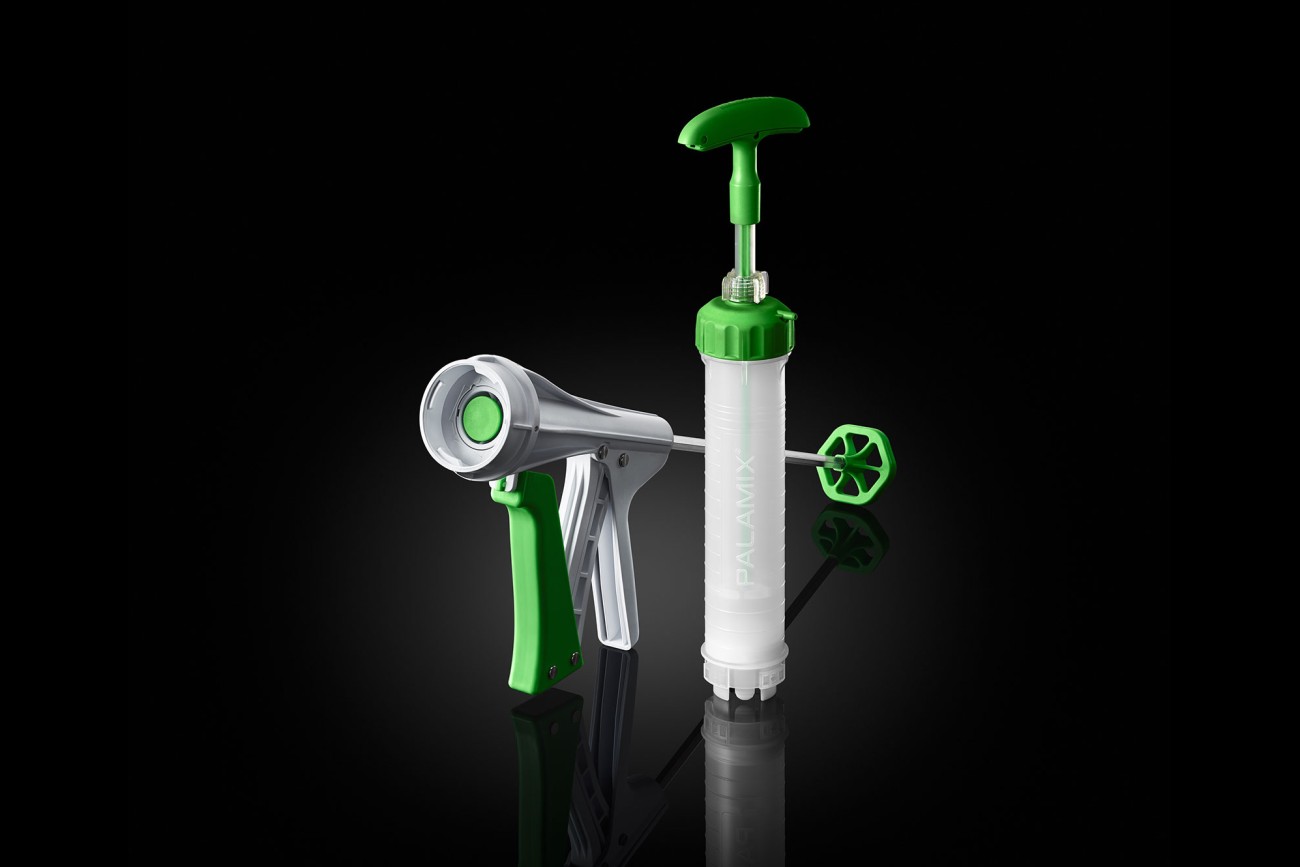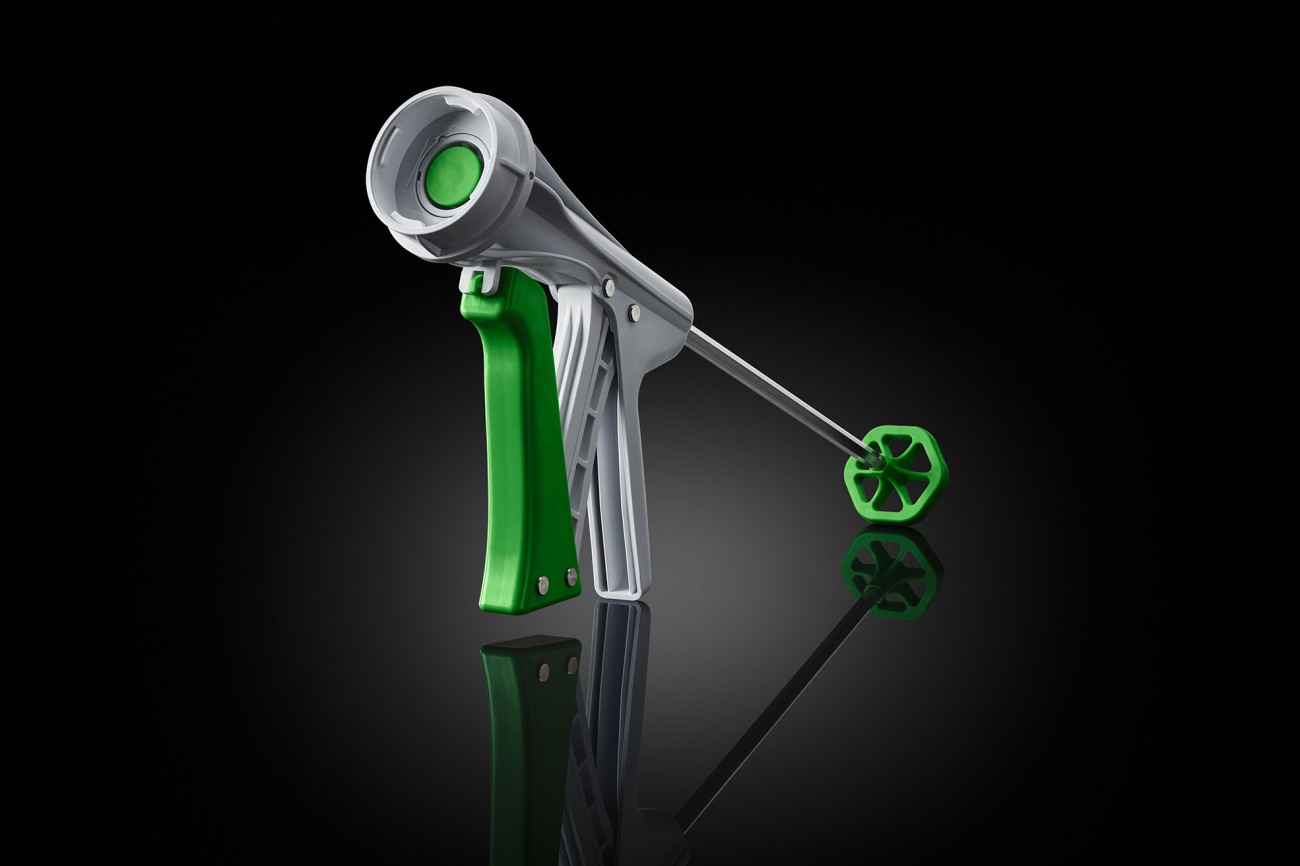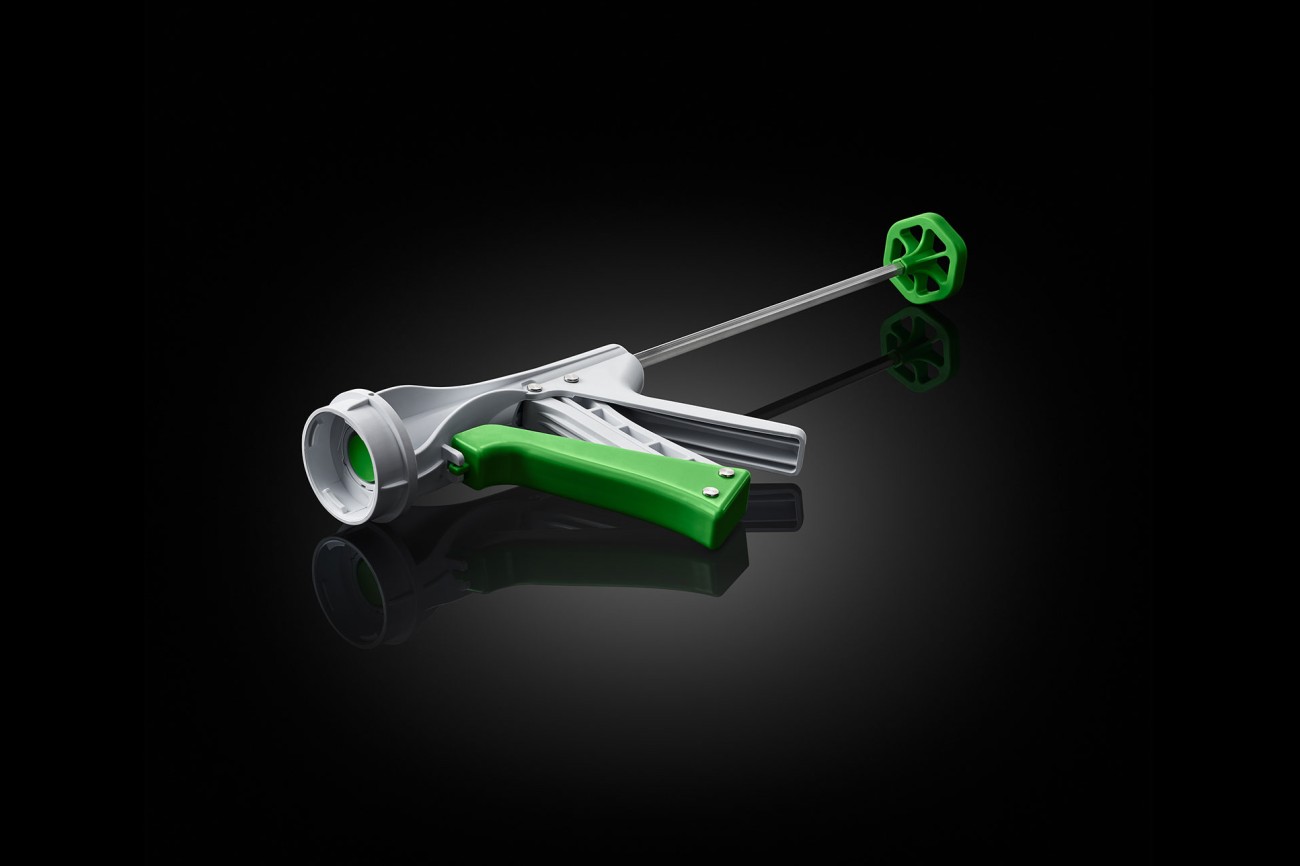A 2012 study of patients undergoing TKA suggested that cement guns provide twice as much interdigitation into porous bone as hand packing.1 The newest addition to the PALACOS® mixing and delivery portfolio, the one-time-use PALAGUN® is a convenient option for facilities seeking the benefits of gun pressurization while maintaining cost efficiency without repeated sterilizations.
PALAGUN®
Sterile, Single Use Cement Gun
Providing Convenience and Cost Effectiveness
PALAGUN®: Your Single-Use Cementing Gun Option
Sterilization is a necessary, but time-consuming and expensive process for all facilities - even more so for those without easy sterilization access. The single-use, fully pre-sterilized PALAGUN® is an important step in efficient modern cementing technique.
- Ready-to-use cement gun eliminates need for timely and costly sterilization
- Sealed sterile pouch minimizes exposure to OR bacteria and particulate before use2
- A great solution for ambulatory surgery centers (ASCs) performing total joint replacements
- Compatible with all Heraeus vacuum cartridge systems (PALAMIX® & PALACOS® pro All-In-One-Fixation-SystemTM)
- Available exclusively in the USA
More information on the PALAMIX Mixing System
More information on the PALACOS pro All-in-One Fixation System
Tray sterilization is expensive, and can be inefficient.
A Journal of Arthroplasty study found significant potential for logistical and economic improvements with single-use instruments in TKA surgeries. The use of pre-sterilized efficiency systems resulted in a median cost reduction of $57-75 per tray sterilized - and tray sterilization was determined to be both the greatest cost driver for traditional instruments and the primary area for cost savings.3,4
Occasionally, cement guns can become contaminated or have use issues during surgery. This necessitates the retrieval of another gun from central supply and a delay in surgery. Each minute of surgical delay costs US hospitals $39.77 and every 15 minutes of surgical time increases the risk of complications including "anemia requiring transfusion, wound dehiscence, renal insufficiency, sepsis, surgical site infection, urinary tract infection, and readmission".5,6 Our pre-sterilized PALAGUN® comes out of the package ready for immediate use, which can save critical intra-operative time. It is also perfect for ASCs without onsite sterilization where the efficiency of our single-use cement gun can contribute to shorter set-up, surgical, and clean-up times.7
Pre-sterilized, single use materials may also reduce the risk of infection by limiting possible contact with contaminants.2 When partnered with a closed mixing system such as PALACOS® R & R+G pro All-in-One Fixation System™, PALAGUN® can help to reduce the threat of contamination on your back table and during surgery.
1 Lutz MJ, et al. The Effect of Cement Gun and Cement Syringe Use on the Tibial Cement Mantle in Total Knee Arthroplasty. J Arthroplasty 2009; 24(3): 461-6.
2 Ritter MA. Operating Room Environment. Clin Orthop Relat Res 1999; 369: 103-9.
3 Goldberg, J. et al. Logistical and Economic Advantages of Sterile-Packed, Single-Use Instruments for Total Knee Arthroplasty. J of Arthroplasty, 2019; 34(9): 1876-1883.
4 Seigel GW, et al. Cost Analysis and Surgical Site Infection Rates in Total Knee Arthroplasty Comparing Traditional vs. Single Use Instrumentation. J Arthroplasty 2015; 30(12): 2271-4.
5 Childers CP, Maggard-Gibbons M. Understanding Costs of Care in the Operating Room. JAMA Surg 2018; 153(4): e176233.
6 Bohl DB, et al. Impact of Operative Time on Adverse Events Following Primary Total Joint Arthroplasty. J Arthroplasty 2018; 33: 2256-62.
7 Mont, M. et al. Single-Use Instruments, Cutting Blocks, and Trials Increase Efficiency in the Operating Room During Total Knee Arthroplasty A Prospective Comparison of Navigated and Non-Navigated Cases. J of Arthroplasty, 2019; (28) 1135–1140.



